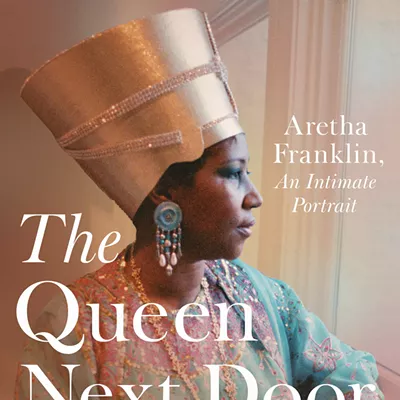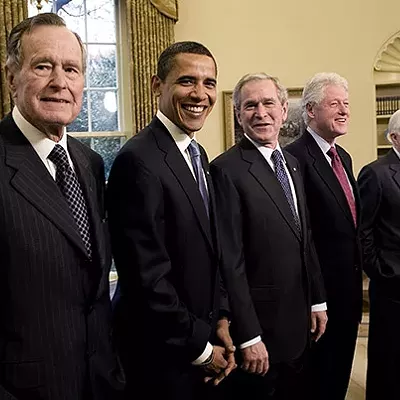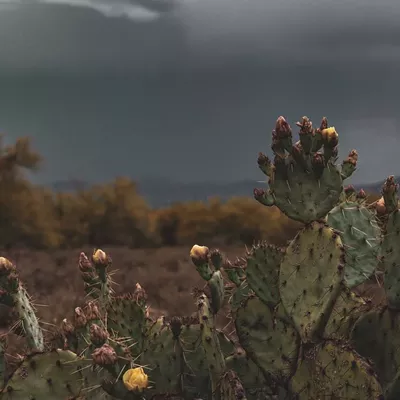Avedon's fashion and celebrity shots filled the magazine's pages, but tucked among these glossy images was a riveting portrait. Shot against a plain white background, an unknown Montana rancher named Wilbur Powell gazed steadily back at the photographer, and the reader.
Museum director Mitchell Wilder immediately dialed up the famous New York photographer. Though the Amon Carter was then best known for traditional Western art, Wilder offered to have the museum sponsor Avedon on a photographic foray through the American West, to make portraits of its working people. Wilder at first wanted Avedon to photograph only women, but Avedon demurred, and the two struck a bargain.
Off and on for the next 5 1/2 years, Avedon and a team of assistants roamed through 13 states in the rural West, in search of the unsung. They found them at county fairs and rodeos, truck shops, stockyards and mines. Posing his subjects against blank white paper, Avedon shot pictures in black and white of waitresses, oil-rig roustabouts, drifters and rodeo cowboys, of miners covered in dust and slaughterhouse workers slathered in blood.
The result, a panoramic portrait of a West that was roughhewn and even disturbing, is on view in a new show at the Center for Creative Photography, organized by the Amon Carter last year to mark the series' 20th anniversary. Their faces etched with work and worry, Avedon's down-and-out Westerners repudiated a century's worth of clichés about the golden frontier.
"Boyd Fortin, thirteen year old, Sweetwater, Texas, 3/10/79," defiantly holds a dead rattlesnake he's just decapitated for this west Texas town's annual Rattlesnake Round-Up. A sad, hollow-eyed drifter, Richard Garber, photographed in 1980 at a highway café in Utah, seems on the verge of collapsing into his own gaunt body. An Oklahoma oil field worker, Red Owens, also pictured in 1980, looms monstrously large, his face scarily covered in black oil.
The reviews were decidedly mixed. When the original edition of In the American West opened at the Amon Carter in 1985, a reporter for the Fort Worth Star-Telegram railed, "This is not our West."
Around the same time as Avedon's odyssey, Arizona photographer Jay Dusard set off on a quest of his own, funded by a Guggenheim grant. He, too, wanted to photograph Western workers, but he fixed his gaze only on the hardworking cowboys--and cowgirls--of ranch-country legend. An occasional cowpuncher himself (Dusard now has a ranch down near Douglas), he tracked down ropers and rustlers from Alberta to Sonora, and made finely detailed pictures at 45 different cattle spreads.
Unlike Avedon, whose plain white paper background deleted any references to place, Dusard photographed range riders in their natural settings. His black-and-white pictures, on view at Etherton Gallery, put cowboys on horses on the open range, or in their hardscrabble herding camps. They lounge easily in front of a tent, or stand against log cabins and tin sheds, their gaze fixed on the photographer.
"Julie Hagen, Wagstaff Land & Cattle Co., Wyoming," 1981, became an iconic image of the contemporary cowgirl, nicknamed "The Mona Lisa of the Range." Dressed in full working regalia, Hagen (a former photography student of Dusard's at Prescott College) leans against the doorway of a rustic cabin. Radiating confidence, she's supremely at ease with the tools of her trade.
Beautifully etched in black and white, this picture, like most of Dusard's, suggests timelessness. Unmarred by pickup trucks or television cables, most of his pictures could have been taken 100 years ago. They're far more romantic than Avedon's rough visions, and at least one epitomizes the Western cowboy myth.
"Martin Black, Stampede Ranch, Nevada," 1982, is a Hollywood-handsome young man, complete with black mustache, sitting on his horse near a paddock. Mountains rise up in the distance behind him. With his hat and a jacket warding off the cold, he's every inch the macho cowboy of screen and story.
Still, Dusard's cowboys are individuals, not just romantic Western types. A picture of four guys all duded up in hats, neckerchiefs and jeans for a day's work finely etches their features. Their assorted postures and get-ups convey their distinct personalities. One cowboy, for instance, has carefully twirled his mustache, and another has turned up in surprisingly clean pressed jeans. And Dusard is careful to acknowledge each man's individuality, naming each of them and their ranch in the title, "Bill Russell, Robert Bennett, Clay Lindley and Thad Smith, T Lazy S Ranch, Nevada," 1982.
Dusard published his project in the book The North American Cowboy: A Portrait, and Avedon published his in In the American West. If both volumes capture the people in a particular time and place, the two projects also became milestones in the evolution of photographic technology.
Both men used an old-fashioned 8-by-10 film camera to make their negatives. Dusard, whom Terry Etherton calls a "fanatical" printer, laboriously printed his finely detailed gelatin silvers the old way, in the darkroom, in a modest size, and that's how they've been exhibited in the 25 years since he shot them. But for his new show, he's brought his old film negatives into the 21st century.
"Jay Dusard represents the old school in that he captures the images on film," Etherton says. "But his output represents the new technology."
Dusard scanned the 25-year-old negatives into a computer, and printed them out in archival carbon inks on an inkjet printer. The new printers have a new level of quality that allows them to render exquisitely sharp images in huge formats; some of Dusard's new pictures are 4 or 5 feet tall. And in the startling magic of the new technology, new details have been revealed for the first time in the gigantic new prints.
In "Jim and Jason Eicke, Bell Ranch, New Mexico," 1981, a moody young teen--and fledgling cowboy--lounges in front of an outbuilding with his cowboy dad. Behind them is a dark wood door where cowboys have burnt brands into the lumber. In the new big picture, some of the brand symbols emerge for the first time. They existed, mysteriously, in the original negative, but even Dusard couldn't see them. Thus, the new technology has actually changed the image.
Avedon's use of technology takes the opposite journey. The photographer, who died in October 2004, not only outraged Westerners 20 years ago with his searing imagery; he also challenged technical conventions of the day. Back when most photographs were a respectable small size, say, 16 by 20 inches, Avedon enlarged his roustabouts and riggers to larger-than-life size--the better to confront the viewer, and the better to assert that photography was the equal of painting.
And instead of framing his gelatin silver prints, he mounted them on aluminum, a lowly material that in those days had closer ties to trailer parks than to art museums. There's no glass on top of the images, either, notes the CCP's Britt Salvesen, giving the viewer an even more direct, unmediated experience with the images.
But what was outrageous then is less so now. The art world is more familiar with outsider images, Salvesen says. And in a photographic world gone mad for digital cameras and computer printing, the large printing paper that Avedon used no longer exists. So his work, once cutting-edge technically, is now a relic of a lost technique.
"We're not even in the transition time," Etherton says. "We're already there. No one is making silver print paper this big anymore."
That doesn't mean that Avedon's work is no longer daring or provocative. It is. The big show, opening this weekend, offers up some 78 images from the original 124 displayed in 1985. (Avedon culled those down from hundreds he made during the five-year project.) These men, women and children stare out at the viewer from a point now 20 or more years into the past.
You can't help but wonder what happened to all of them: the sad and hostile carnies, weary from their itinerant life; the miner unemployed in late middle age; the young Navajo drifter caught in a stupor near Gallup, N.M.; the mental patient with a rosary round her neck.
But if Avedon was on the lookout for desperation, he sometimes found its counterpoint. He photographed a 12-year-old named Sandra Bennett in Rocky Ford, Colo., in 1980. She's a freckle-faced small-town girl in broken-down overalls, but she looks boldly back at the famous photographer. She serves as the opening image to the show, asserting her right to be in a world that maybe doesn't much want her.
The closing figure is equally self-confident. Patricia Wilde, a middle-aged housekeeper from Kalispell, Mont., pictured in 1981, is the kind of strong woman young Sandra perhaps has grown up to be. Avedon lived long enough to plan this anniversary show, Salvesen says, so the sequencing--Sandra first and Patricia last--is his, and so are the rest of the groupings and wall colors.
The first room, painted a pale gray, includes assorted workers and family groups, underlining the point that human ties can mitigate some of the hardships of working-class life. A burly young dad plays with a baby daughter he clearly adores; a Hispanic woman, a factory worker, out for the day at the county fair, poses with her little niece. The wife of the unemployed miner, a waitress herself, leans in to give him bodily comfort. But it also includes lone figures with only a loose tether to family life, like the truck driver Billy Mudd, bare-chested and grizzled, his face hard as a mask.
Room two darkens to a deeper gray and "tends toward a sense of being off the grid," Salvesen says, gathering up drifters, an unemployed blackjack dealer, tattooed prisoners, a beekeeper studded with bees. "You get a sense of how close to the edge most of these people were."
The final room is a cave-like black. Like the last circle of hell, it portrays people who work in the darkness in mines below the earth, or in slaughterhouse hellholes, or in dangerous oil rigs. These workers, spattered with oil and blood, are often posed in groups, a visual clue to the solidarity they need to get through their workdays alive.
These men might have been Dusard cowboys in another life. A Texas rancher told the Avedon team that economic reality was sweeping away the romance of range life.
"I have a hard time keeping young cowboys," he says, quoted in the exhibition catalog. "They can make more money in the oil patch."













